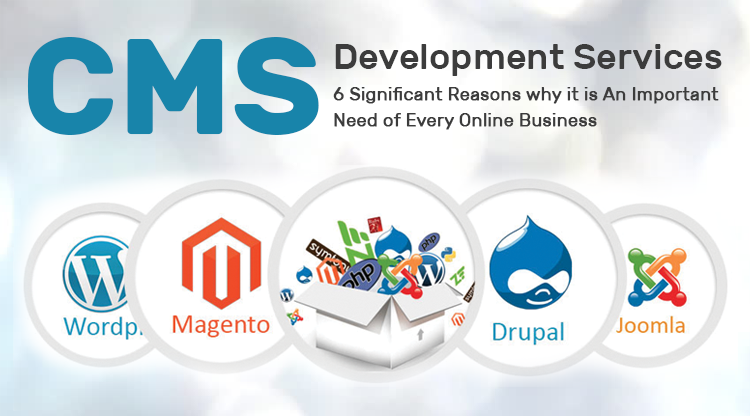In today’s rapidly evolving digital landscape, businesses must adapt to meet the ever-changing demands of their customers. Two critical components of a successful online presence are Content Management System (CMS) development and responsive web design. By integrating these elements effectively, companies can create scalable solutions that not only meet current needs but also anticipate future growth. This article explores the synergy between CMS development and responsive design, highlighting how these technologies can be leveraged to create robust, adaptable solutions.
Understanding CMS Development
A Content Management System (CMS) is a software application that allows users to create, manage, and modify digital content without requiring specialized technical knowledge. CMS development services, such as those offered in Australia, play a crucial role in helping businesses streamline their content management processes. According to a recent survey, 64% of businesses use a CMS for their websites, underscoring its importance in the digital ecosystem.
Key Benefits of CMS Development
- User-Friendly Interfaces: Modern CMS platforms offer intuitive interfaces that simplify content creation and management. This ease of use empowers non-technical users to update their websites regularly without needing extensive training or technical expertise.
- Customization and Flexibility: CMS platforms, such as WordPress, Joomla, and Drupal, provide extensive customization options. Businesses can tailor their CMS to fit their specific needs, whether it’s through custom themes, plugins, or modules.
- Scalability: As businesses grow, their content management needs evolve. A well-designed CMS can scale to accommodate increased content volume, user traffic, and advanced features. This scalability ensures that businesses can expand their online presence without undergoing a complete overhaul of their CMS.
- Security: CMS platforms often include built-in security features and regular updates to protect against vulnerabilities. With the increasing prevalence of cyber threats, having a secure CMS is essential for safeguarding sensitive data.
The Role of Responsive Web Design
Responsive web design ensures that a website performs well across various devices and screen sizes. This design approach is crucial in a mobile-centric world where users access websites from smartphones, tablets, and desktops. According to Statista, mobile devices accounted for 54.8% of global website traffic in 2023, highlighting the importance of responsive design.
Key Benefits of Responsive Web Design
- Improved User Experience: Responsive design enhances user experience by providing a seamless interface across all devices. Users can navigate and interact with the website easily, regardless of their device, which can lead to higher engagement and lower bounce rates.
- Increased Accessibility: By adapting to different screen sizes and orientations, responsive design ensures that content is accessible to a wider audience. This inclusivity can improve user satisfaction and expand the reach of a website.
- Cost-Effectiveness: Developing a responsive website can be more cost-effective than creating separate websites for different devices. A single responsive site can handle all device types, reducing the need for multiple design and development efforts.
- SEO Benefits: Search engines, like Google, prioritize mobile-friendly websites in their rankings. A responsive design can improve a website’s SEO performance by ensuring it meets mobile usability standards, which can lead to higher search engine rankings and increased organic traffic.
Synergy Between CMS Development and Responsive Design
Integrating CMS development with responsive web design creates a powerful combination for building scalable, adaptable websites. Here’s how these elements work together to deliver optimal results:
- Unified Content Management: A CMS with responsive design capabilities allows businesses to manage and publish content seamlessly across all devices. This integration ensures consistency in content presentation and user experience, regardless of how users access the site.
- Streamlined Updates: With a responsive CMS, updates and changes can be applied universally across all device versions of the site. This streamlines the process of maintaining and updating content, ensuring that all users receive the latest information.
- Enhanced Performance: A responsive CMS is optimized for performance across different devices, which can improve page load times and overall site speed. This optimization is crucial for retaining users and providing a smooth browsing experience.
- Scalability and Flexibility: Combining CMS development with responsive design allows for greater scalability and flexibility. Businesses can easily expand their content and features while ensuring that the site remains adaptable to new devices and screen sizes.
Industry Statistics and Facts
- Market Adoption: According to BuiltWith, as of 2024, 64.6% of websites use WordPress, a popular CMS platform. This widespread adoption highlights the importance of CMS development services in the industry.
- Mobile Traffic: A report from Statista indicates that mobile devices generated 54.8% of global website traffic in 2023. This statistic underscores the critical need for responsive web design to accommodate mobile users.
- SEO Impact: Google’s Mobile-First Indexing, introduced in 2018, prioritizes mobile-friendly websites in search results. This shift in indexing practices reinforces the importance of responsive design for SEO success.
- Cost Savings: According to a study by Econsultancy, responsive design can reduce website development costs by 40% compared to maintaining separate desktop and mobile sites. This cost efficiency makes responsive design a valuable investment for businesses.
Case Studies: Real-World Applications
- CMS Development Services in Australia: An Australian e-commerce company utilized a custom CMS solution to manage its extensive product catalog. The integration of responsive design ensured that customers had a seamless shopping experience on both mobile and desktop devices, resulting in a 25% increase in online sales.
- Responsive Web Design Company in Dubai: A Dubai-based digital agency implemented a responsive design for a client’s corporate website. The redesign led to a 30% increase in mobile traffic and a 20% improvement in overall user engagement, demonstrating the impact of responsive design on business performance.
Conclusion
Incorporating CMS development and responsive web design is essential for creating scalable and adaptable digital solutions. By leveraging these technologies, businesses can enhance user experience, improve SEO performance, and ensure that their websites remain flexible and future-proof. As digital trends continue to evolve, integrating CMS development services with responsive design will be crucial for staying competitive and meeting the needs of a diverse, multi-device audience.
Whether you’re a business in Australia seeking CMS development services or a company in Dubai looking for a responsive web design company, investing in these solutions will pave the way for a more dynamic and successful online presence.




